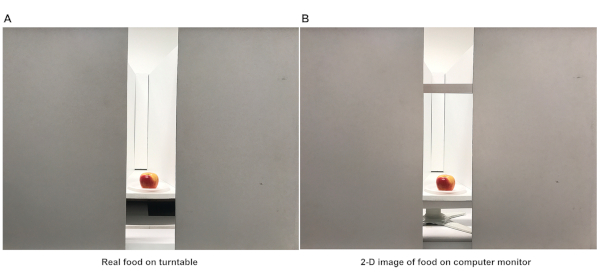A subscription to JoVE is required to view this content. Sign in or start your free trial.
Methods for Presenting Real-world Objects Under Controlled Laboratory Conditions
In This Article
Summary
We describe methods for presenting real-world objects and matched images of the same objects under tightly-controlled experimental conditions. The methods are described in the context of a decision-making task, but the same real-world approach can be extended to other cognitive domains such as perception, attention, and memory.
Abstract
Our knowledge of human object vision is based almost exclusively on studies in which the stimuli are presented in the form of computerized two-dimensional (2-D) images. In everyday life, however, humans interact predominantly with real-world solid objects, not images. Currently, we know very little about whether images of objects trigger similar behavioral or neural processes as do real-world exemplars. Here, we present methods for bringing the real-world into the laboratory. We detail methods for presenting rich, ecologically-valid real-world stimuli under tightly-controlled viewing conditions. We describe how to match closely the visual appearance of real objects and their images, as well as novel apparatus and protocols that can be used to present real objects and computerized images on successively interleaved trials. We use a decision-making paradigm as a case example in which we compare willingness-to-pay (WTP) for real snack foods versus 2-D images of the same items. We show that WTP increases by 6.6% for food items displayed as real objects versus high-resolution 2-D colored images of the same foods -suggesting that real foods are perceived as being more valuable than their images. Although presenting real object stimuli under controlled conditions presents several practical challenges for the experimenter, this approach will fundamentally expand our understanding of the cognitive and neural processes that underlie naturalistic vision.
Introduction
The translational value of primary research in human perception and cognition hinges on the extent to which the findings transfer to real-world stimuli and contexts. A long-standing question concerns how the brain processes real-world sensory inputs. Currently, knowledge of visual cognition is based almost exclusively on studies that have relied on stimuli in the form of two-dimensional (2-D) pictures, usually presented in the form of computerized images. Although image interaction is becoming increasingly common in the modern world, humans are active observers for whom the visual system has evolved to allow perception and interaction with real objects, not images
Protocol
The experimental protocols were approved by the University of Nevada, Reno Social, Behavioral, and Educational Institutional Review Board.
1. Stimuli and Apparatus

Figure 1: Real object (displayed on the turntable) and matched 2-D image of the same item (displayed on a computer monitor). The stimuli in.......
Representative Results
Representative results from this experiment are presented below. A more detailed description of the results, together with a follow-up study, can be found in the original publication7. We used a linear mixed effects model with the dependent variable of Bid, and independent variables of Display Format, Preference, Caloric Density, and Estimated Calories. As expected, and in line with previous studies12,14, there was a strong positive relati.......
Discussion
The overarching goal of the current paper is to facilitate future studies of 'real world' object vision by providing detailed information about how to present large numbers of real-world objects (and images) under controlled experimental conditions. We present an ecologically-valid approach for studying the factors that influence dietary choice and food valuation. We describe methods employed in a recent study of human decision-making7 in which we examined whether snack foods presente.......
Disclosures
The authors have nothing to disclose.
Acknowledgements
This work was supported by grants to J.C. Snow from the National Eye Institute of the National Institutes of Health (NIH) under Award Number R01EY026701, the National Science Foundation (NSF) [grant 1632849] and the Clinical Translational Research Infrastructure Network [grant 17-746Q-UNR-PG53-00]. The content is solely the responsibility of the authors and does not necessarily represent the official views of the NIH, NSF or CTR-IN.
....Materials
| Name | Company | Catalog Number | Comments |
| EOS Rebel T2i Body Camera | Canon | 4462B001 | |
| MATLAB | MathWorks | R2017b | Computer programming software. Download this additional free toolbox: PsychToolbox 3.0.14 |
| Photoshop | Adobe | CS6 | |
| PLATO Visual Occlusion Glasses | Translucent Technologies Inc. | N/A | |
| SPSS | IBM | Version 22 | Statitical analysis software |
| ToTaL Control System (USB) | Translucent Technologies Inc. | N/A | The ToTaL Control System controls the PLATO spectacles |
References
- Gibson, J. J. . The Ecological Approach to Visual Perception. , (1979).
- Westheimer, G. Three-dimensional displays and stereo vision. Proceedings of the Royal Society B: Biological Sciences. 278 (1716), 2241-2248 (2011).
- Julesz, B.
Reprints and Permissions
Request permission to reuse the text or figures of this JoVE article
Request PermissionThis article has been published
Video Coming Soon
ABOUT JoVE
Copyright © 2025 MyJoVE Corporation. All rights reserved